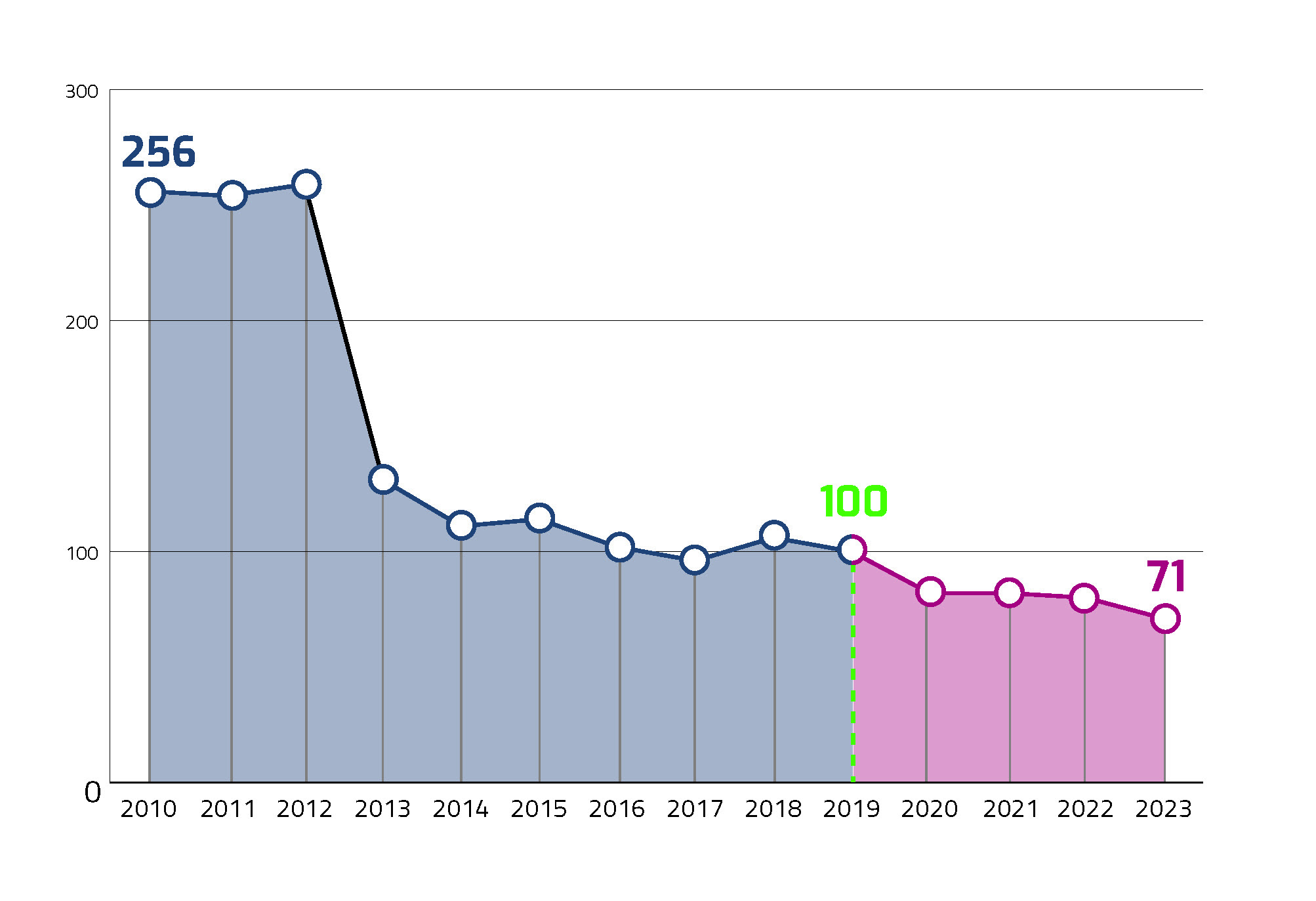For several years, Banca d'Italia has followed a programme to reduce its environmental and carbon footprint in order to achieve its long-term goal of net zero emissions.
Objectives
The Bank's five objectives, based on its Environmental Policy adopted in 2015, are:

Banca d'Italia's Strategic Plan for 2023-25 contains a targeted action plan - 'The net zero target' - with lines of action that seek to:
- reduce fossil fuel consumption;
- promote self-production of energy from renewable sources;
- improve the energy performance of buildings and technical installations;
- encourage e-mobility;
- reduce the environmental impact of business travel;
- offset greenhouse gas emissions;
- promote staff training on and awareness of environmental issues;
- cooperate more with other public institutions on environmental issues.
Activities
The Bank has taken a number of steps to reduce its environmental impact:
- since 2023, purchasing electricity generated from renewable sources only;
- installing three photovoltaic plants producing about 65,000 kWh of electricity (equal to 0.1 per cent of total annual electricity consumption) and planning the installation of additional plants including one under construction at the Centro Donato Menichella in Frascati;
- making many energy efficiency upgrades to institutional buildings and two data centres;
- hosting two green roofs, one of which at the Bolzano branch;
- digitalizing work processes;
- using recycled paper and gradually reducing the number of personal printers and the printing of institutional publications;
- reducing the waste produced at the origin and gradually decreasing disposable plastic packaging;
- sending 100 per cent of worn banknotes, shredded during the cash sorting process, to waste-to-energy recovery facilities;
- encouraging sustainable mobility by providing more electric cars, electric vehicle charging stations and bicycle racks;
- reducing the environmental impact of business travel (e.g. taking high-speed trains where available);
- including social and environmental requirements clauses in contracts;
- participating in events such as National Day for Energy Saving and Sustainable Lifestyles and Earth Hour.
In 2023, the Bank financed a reforestation project to plant 4,500 trees in four areas of Italy and purchased carbon credits on the voluntary market to offset part of its greenhouse gas emissions.
The Bank's main initiatives are set out in the Environment Report, drawn up for the first time in 2010 and updated annually. The Report describes the Bank's environmental impact using a series of quantitative indicators and provides a comprehensive overview of both improvements achieved over time and areas where further action is needed. From 2025 the Enviromental report has ceased publication and its contents have been incorporated into the new Activity and Sustainability Report.
Results
Banca d'Italia's carbon footprint - CO2 equivalent emissions 2010-2023 (1) (index numbers, 2019=100)
The Bank's commitment to the environment is evidenced by certifications issued by external entities: the banknote production plant has been certified since 2004 under international environmental standard ISO 14001. In addition, the Centro Donato Menichella in Frascati, the site that consumes the most energy, largely because it houses a data processing centre, has an energy management system certified under ISO 50001.
Banca d’Italia's greenhouse gas emissions from its internal operations have progressively decreased over time, registering in 2023 levels approximately 29 percent lower than in 2019, which was chosen as the base year for measuring decarbonization results.

Other projects
The Bank collaborates with various institutions in the environmental field, including: the Italian National Agency for New Technologies, Energy and Sustainable Economic Development (ENEA) on a research project on the environmental impact of smart working; the Carabinieri Forest, Environmental and Agri-food Command for the development of reforestation projects in areas of Italy; and the National School of Administration, for the delivery of sustainability courses for public officials and civil servants.


 YouTube
YouTube
 X - Banca d'Italia
X - Banca d'Italia
 Linkedin
Linkedin
